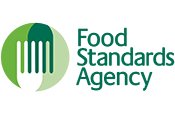Labelling food products
Dishonest labelling and misdescription
Falsely describing, advertising or presenting food is an offence. Many laws help protect consumers against dishonest labelling and misleading descriptions, including:
- Food Safety Order
- Consumer Protection from Unfair Trading Regulations
- General Food Regulations
- Food Information Regulations
The description of food includes any of the following information:
- its name
- its ingredients
- its origin
- the processes it has undergone
The misdescription of food deceives consumers. It can trick people into buying something they would not otherwise buy. It poses serious risks to people intolerant or allergic to certain foods. It also leads to unfair competition.
Examples of food misdescription
Some examples of food misdescription include:
- Using a legal name for a food without the correct composition. For example, food sold as chocolate must have a certain amount of cocoa solids. Even if there are no composition rules for a food, such as fish fingers, it still must be described accurately.
- Extending a food - eg, adding offal to meat products without declaring it.
- Incorrectly labelling the true origin of a food or its ingredients in terms of animal species, plant variety, geographical origin or country.
- Incorrectly describing, or failing to describe, a process or treatment - such as not declaring irradiated food.
- Incorrectly stating the amount of an ingredient.
Read more about preventing and reporting food crime.
Reporting food crime
Members of the public and those working in the food and drink sector can speak up about food crime through Food Crime Confidential.
Suspicions or information about food crime in Northern Ireland should be reported to FSA by emailing incidents.ni@food.gov.uk or by contacting FSA on 028 9041 7700 and asking to speak with the Food Fraud Liaison Officer.
Hygiene concerns should be reported to the local authority if there is no direct intention to deceive.
